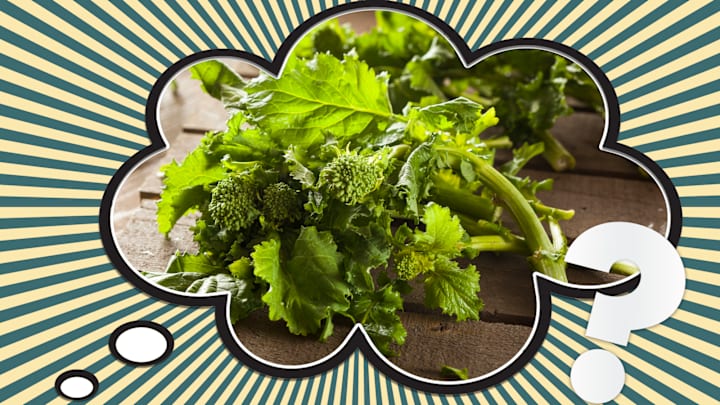When you're grocery shopping on a busy weekend afternoon, the produce section can be overwhelming. After parsing the differences between orange and purple carrots, and organic vegetables, and everything else, you may be tempted to skim the labels of whatever you grab. But two items that share similar names aren't necessarily interchangeable. If your supermarket is out of broccoli, think twice before buying broccoli rabe instead—the two veggies differ in some major ways.
According to Bon Appetit, broccoli rabe and broccoli are more distantly related than their names suggest. Chinese broccoli (gai lan), broccolini, and the classic broccoli sold in most American grocery stores are all cultivars of the species Brassica oleracea. (Kale, cauliflower, cabbage, and Brussels sprouts are Brassica oleracea cultivars as well).
Broccoli rabe (pronounced rob) belongs to a different plant species: Brassica rapa. That makes the leafy green more closely related to turnips than the broccoli that shares its tiny buds and dark green shade. The two vegetables also taste different. If you're used to broccoli's subtly bitter flavor, you may be turned off by broccoli rabe's strong, sharp bitterness.
To mellow the taste of its stems, buds, and leaves, broccoli rabe must be treated in a special way. Before adding the ingredient to a dish, blanch it for a minute in boiling, salted water. This will remove some of the aggressive bitterness. Even blanched, broccoli rabe still has a bold, earthy flavor profile, making it a perfect match for bright acids and fatty meats. The vegetable is an essential component in Philadelphia's famous Italian roast pork sandwich. It can also be sautéed with olive oil, garlic, and lemon juice and served as a side.
If you've never seen broccoli rabe at your local grocery store, you may recognize it by its other name: rapini. If that moniker was more common, there would be a lot less confusion among people who don't read labels carefully in the produce section.
[h/t Bon Appetit]
